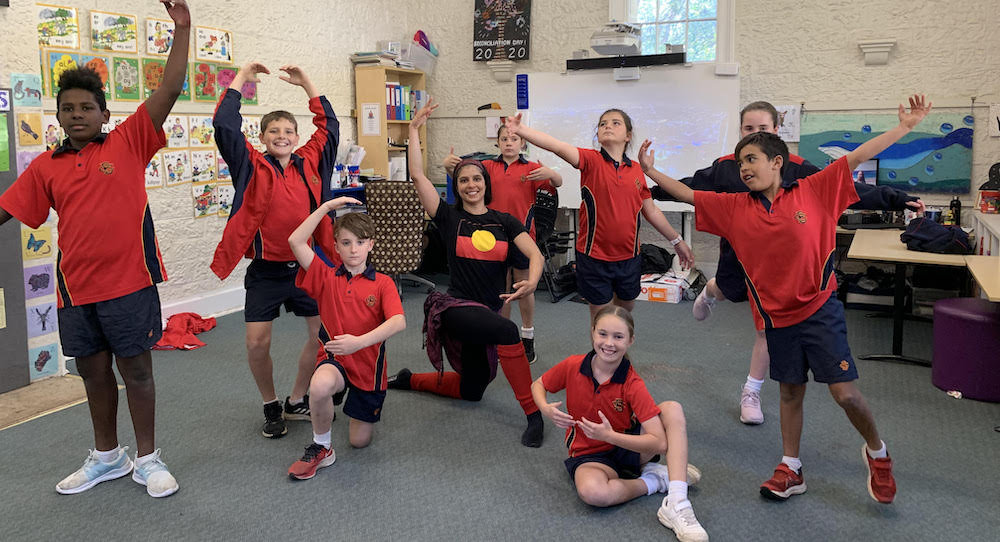This story is not about ballet. It is about choice, and who gets to choose.
It begins with a girl named Katia. “I migrated to Australia from Ukraine in the early ‘90s with my Mum. I was eight, and we didn’t speak any English. She was a doctor, an anaesthetist, so she spent five years just to get up to speed with English…and trying to sit the medical exams here.”
The struggle to settle, learn language, et cetera took the best part of a decade.

“And so, there was a long period when we didn’t have any money for extra-curricular activities.” Indeed, they did not even have a car.
Stories like Katia’s are everywhere; a fact she came to understand as a young adult when, finally able to afford it, she reconnected with her girlhood love. Ballet.
It was then that she noticed that everyone else in her class was “really wealthy.” As she now recalls, “I went to ballet and saw all these little girls getting picked up in a Lexus, and everyone was white and from the North Shore or Eastern suburbs [the posher parts of Sydney]. Of course, there were exceptions to the rule, but overall…”
Years later, Dr Katia Kullengren had an idea. Ballet Without Borders. As the organisation’s website now attests, her vision was to break the real and perceived barriers of ballet accessibility in Australia. In short, to pierce the perimeter fences of class, cultural bias and gender orthodoxy. To make ballet possible for more people than ever before. To free it from its silo.
“If you go to a really disadvantaged public school,” she says, “you’re probably going to be hanging with kids from similar disadvantage.” The point here is one of norms, expectations and opportunities.
For ballet, this is especially relevant. There are entire swathes of the community who never do it, see it or hear anything about it (other than the fairy princess tutu cliché, and maybe a Billy Elliot re-run). For an artform continually fending off charges of elitism and irrelevance, there is a clear need to find new fans.
If, as Kullengren argues, your artform is “restricted to the top five percent of the population,” you have a talent pool problem and an ongoing diversity issue. Aside from feel good factors and/or ethical and political considerations, broadening the participation base is pure pragmatism. Why wouldn’t you want more kids doing ballet?

Though that may seem sensible, less obvious is: why ballet? There are participation barriers everywhere. The impacts of both conscious and unconscious bias are felt in areas as crucial as housing, employment, the law…the list goes on. Of all things, why do the children of disadvantage need to dance?
Kullengren’s initial response is pointed, “Okay, why rugby?”
Most of us accept without hesitation the idea that kids from less affluent backgrounds should get the chance to do sport. The exercise, the discipline, the resilience. The overall well-being benefits of sport are writ large. Yet, the same is true of ballet. It is, after all, an athletic artform.
While Kullengren acknowledges that both have limited career pathways, she reminds us that both have multiple upsides: physical, mental and social.
“By not providing this opportunity, you’re closing the door to a majority of the population, which means that you’re not doing any favours for the ‘lower’ class, you’re not breaking down barriers, and you’re confining your child to a very small pocket of experience.”
Enter Ballet Without Borders, a registered charity organisation bringing ballet to public schools, and doing so in a way that eliminates cost and other hurdles. “We take away all the peripherals,” she explains. “There’s no need for tights or special shoes. Just rock up in your gym clothes and socks. But you’re still learning. All the methodology, all the terminology, the beautiful classical music. All that’s still there; but you don’t have to be dressed up.”
Note the focus on schools. As it grew from Kullengren’s initial idea, Ballet Without Borders refined its approach. “When we tried sponsoring kids to go to ballet schools, they couldn’t get there,” she reveals. “Sole parents, no car, siblings that had to be looked after. It just wasn’t feasible.”
The same was true of the vacation workshop model. And so, if ballet was hard to get to, she thought, why not take it to where the people were? Although this, too, created a set of challenges, principally around compliance and stigma – namely, it’s a rich, white girl thing – Ballet Without Borders now has schools from Sydney to Perth wanting to take part.
Rather than the usual outreach ‘meet and greet’ visit or one-off workshop, Kullengren’s team offers a term long syllabus that culminates in “a little performance.”

Importantly, Ballet Without Borders is neither a star search nor a dance school marketing exercise. “I honestly don’t care whether they love it or they hate it. It’s the fact that they have the same opportunity to decide.”
In a non-ideal world, where money, cultural pressure and a plain lack of access limit choices for many (most?), opening windows for people to “at least try” something different is what drives the one time non-English speaking migrant child.
These days, as a mother, and as a more affluent person, Kullengren is thankful for the opportunity to give her six-year-old son the choices she never had. Like martial arts, football and ballet.
She shakes her head and flashes a wry smile at that thought. Her son did not take to dance. “When I sent him to a class just to try it, because I can, it was all pink. All tutus. Nothing for boys.”
There is, it seems, still a lot of work for Ballet Without Borders to do.
For more information on Ballet Without Borders, visit www.balletwithoutborders.org.
By Paul Ransom of Dance Informa.

















